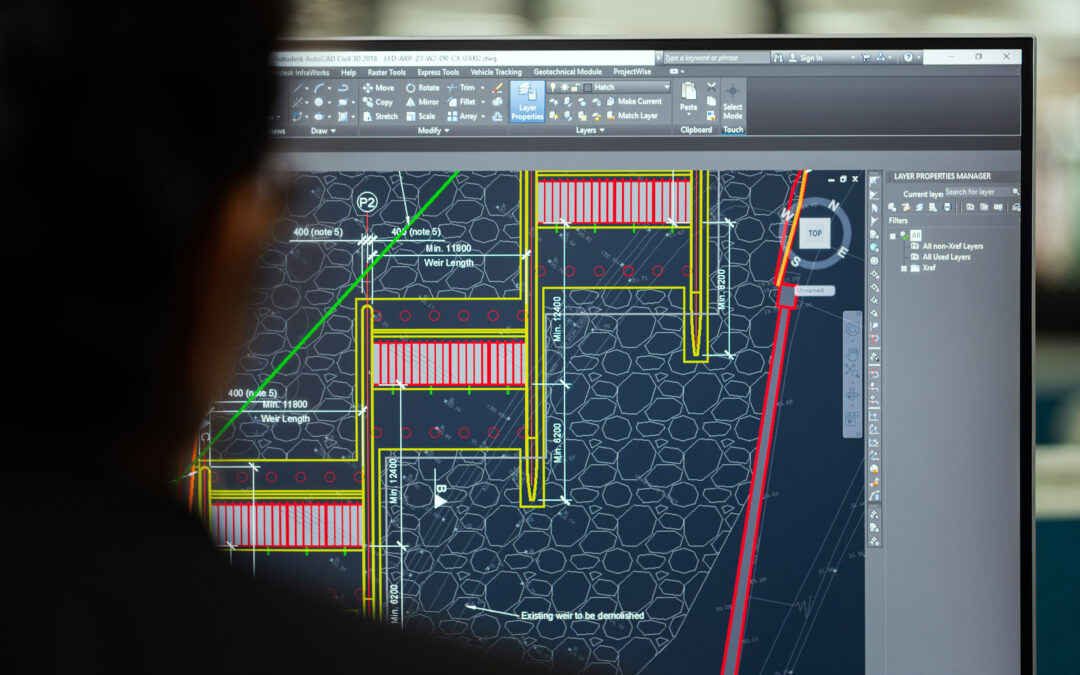
by Tony Gavin | Nov 30, 2024 | Uncategorized
Transitioning from military service to a civilian career can be challenging for veterans. However, the Asia-Pacific region offers a wealth of opportunities for those ready to enter the civilian workforce, with supportive programs and high-demand sectors eager for their skills. Here’s a comprehensive guide to navigating career paths, skill development options, and support systems available for veterans in the Asia-Pacific.
1. Recognising Transferable Skills
Veterans bring a range of valuable skills to the civilian workforce, from leadership and problem-solving to time management and resilience. Many roles in the Asia-Pacific region, especially those in logistics, project management, and security, align well with the skills veterans acquire in service. Recognising these transferable skills and aligning them with civilian job descriptions is a critical first step for veterans entering the job market.
Additionally, roles that demand discipline, strategic planning, and adaptability, such as operations management or supply chain roles, are ideal for veterans. These positions allow veterans to leverage their unique experiences and contribute significantly to their new organisations.
2. High-Demand Industries for Veterans
Several industries across the Asia-Pacific are actively seeking veterans’ skills. The tech industry, for instance, values the problem-solving abilities and resilience veterans bring, offering opportunities in IT management, cybersecurity, and network administration. The healthcare sector also provides viable career options for those with medical training or an interest in healthcare administration, particularly in paramedicine, emergency response, and facility management roles.
Another growing sector is renewable energy, where veterans can find roles in project management, safety coordination, and technical support. These industries not only align with veterans’ skill sets but also offer pathways for professional growth and career stability.
3. Supportive Programs and Networks for Veterans
Transitioning from military to civilian life is supported by several government and community programs in the Asia-Pacific. For example, Australia’s Department of Veterans’ Affairs provides employment resources, and non-profit organisations like Soldier On and Mates4Mates offer mentorship, career counselling, and networking opportunities. Veterans can connect with former service members who have successfully transitioned, providing valuable insights and support.
Other countries in the region, such as New Zealand and Singapore, have similar initiatives focused on integrating veterans into the workforce, ensuring they have the resources needed to succeed in civilian careers. These programs are essential for building confidence and connecting veterans with potential employers.
4. Educational Grants and Skill Development
To bridge any skill gaps, veterans can access education grants and vocational training programs. In Australia, veterans are eligible for vocational education and training through the TAFE system, providing hands-on courses in areas such as information technology, business management, and trades. Scholarships and financial assistance for higher education are also available, helping veterans acquire qualifications that can boost their employability.
Many universities offer veteran-specific programs to ease the transition, with flexible learning options and additional support services. Online learning platforms, such as Open Universities Australia, allow veterans to earn certifications or degrees, giving them access to broader career opportunities.
5. Entrepreneurship and Small Business Ventures
For veterans interested in self-employment, entrepreneurship is a rewarding option. The Asia-Pacific region provides numerous small business grants, low-interest loans, and startup incubator programs designed for veterans. These resources allow veterans to start their own businesses, leveraging the leadership and resourcefulness they developed during their service.
From consulting services to retail, veterans can establish enterprises in various fields. Government-backed initiatives also provide training on business management and financial planning, ensuring veterans have the tools to succeed as entrepreneurs.
6. Mental Health and Well-being Support
Transitioning to civilian life can be a significant adjustment, and mental health support is essential for long-term career success. Many veteran programs in the Asia-Pacific offer counselling services, mental health resources, and peer support networks. Organisations like Open Arms (Australia) provide specialised mental health support tailored to veterans, ensuring they can manage stress effectively and succeed in their civilian roles.
Conclusion
The Asia-Pacific region provides a supportive environment for veterans seeking new career paths. By recognising their transferable skills, exploring high-demand industries, and leveraging available support networks, veterans have access to a range of fulfilling opportunities that align with their experience and aspirations. Embracing these resources can make the transition smoother, unlocking potential and enabling veterans to thrive in their post-service careers.

by Tony Gavin | Nov 23, 2024 | Uncategorized
In the fast-paced construction industry, efficient recruitment is critical. Recruitment software has transformed the hiring process, particularly in large-scale construction projects, where project timelines are often tight, and specific skill sets are in high demand. Here’s how recruitment software is reshaping construction hiring and why it’s becoming essential for companies striving to maintain an efficient and reliable workforce.
1. Faster Sourcing and Candidate Screening
Recruitment software uses advanced algorithms and AI to streamline sourcing and screening, which is particularly useful in construction. These tools scan resumes, filter for specific skills, and rank candidates, allowing hiring managers to focus on the most qualified applicants quickly. This capability is invaluable in construction, where labour shortages can delay project timelines, and positions need to be filled efficiently.
AI-based recruitment software can also predict candidate success based on their previous job performance and skills, adding an extra layer of precision to hiring decisions. These predictions can be tailored to specific needs, such as on-site project management, safety compliance, or technical skills in areas like scaffolding or heavy machinery operation.
2. Enhanced Collaboration and Centralised Candidate Management
Construction projects often involve multiple stakeholders and require seamless communication. Recruitment software centralises candidate information, making it accessible to all team members involved in hiring. From initial sourcing to final onboarding, team members can collaborate effectively, ensuring that no detail is overlooked.
Through shared dashboards, hiring managers can leave notes on each candidate, track interview progress, and review feedback from other team members. This level of collaboration ensures that all decision-makers are aligned, reducing bottlenecks and improving the overall hiring process’s efficiency.
3. Streamlined Compliance and Documentation
Construction projects must adhere to strict legal and safety standards. Recruitment software simplifies compliance by securely storing important documents, such as safety certifications, work permits, and insurance information. Software solutions can send automated reminders to ensure these documents remain current, reducing the risk of compliance issues on-site.
Compliance tracking is a significant benefit, as construction companies face frequent audits and inspections. Ensuring that all documentation is up-to-date not only supports legal compliance but also reassures project owners and stakeholders that safety is a priority.
4. Improved Candidate Experience
An organised and transparent hiring process contributes to a positive candidate experience, which is essential for attracting skilled professionals. Recruitment software enables consistent communication with candidates, keeping them informed about their application status, interview schedules, and next steps. Many systems offer mobile-friendly applications, allowing candidates to check updates on the go.
A streamlined hiring experience reflects positively on the company, showing candidates that the organisation values efficiency and professionalism. This not only attracts high-quality applicants but also enhances the company’s reputation in the industry.
5. Data-Driven Insights for Continuous Improvement
Data analytics is a core feature of modern recruitment software. Construction companies can track metrics like time-to-hire, cost-per-hire, and source effectiveness, which provide valuable insights into their hiring processes. These insights help identify areas for improvement, such as reducing time spent on specific steps or optimising sourcing strategies to attract more qualified candidates.
Recruitment software also enables companies to measure candidate quality based on long-term job performance, allowing for a more strategic hiring process. By analysing these metrics over time, construction companies can refine their approach, ensuring they meet project demands while managing costs effectively.
Conclusion
Recruitment software is transforming the way construction companies approach hiring. By streamlining sourcing, enhancing collaboration, and ensuring compliance, these tools play a pivotal role in helping companies secure the skilled workforce needed to meet project timelines and maintain high standards. As construction projects continue to increase in scope and complexity, recruitment software will remain an indispensable asset in the industry.

by Tony Gavin | Nov 2, 2024 | Uncategorized
As Australian engineering and construction industries face increasing demands, from managing skilled labour shortages to meeting sustainability goals, automation has emerged as a pivotal solution. Through innovative technologies like AI, robotics, and data analytics, automation is streamlining tasks, improving accuracy, and setting new safety standards across worksites.
1. Driving Productivity and Efficiency on Projects
Automation is tackling inefficiencies head-on. For example, autonomous machinery, such as bulldozers and excavators, can be programmed to carry out routine tasks, allowing for 24/7 operations. Robotics enables faster bricklaying, welding, and even intricate tasks like wiring installations, all of which significantly reduce the time required to complete projects. Automated 3D printing further allows teams to quickly prototype designs, enabling rapid adjustments and more efficient resource use.
2. Enhancing Safety with Robotic Assistance and Drones
Safety is a primary concern in the construction sector, where automation plays a vital role. Drones are commonly used for site inspections, eliminating the need for workers to access high or unstable areas. Additionally, wearable technology powered by IoT sensors monitors the health and fatigue levels of workers, alerting supervisors to potential risks. Robotics also assists with hazardous tasks, from demolitions to handling heavy materials, substantially lowering injury risks on-site.
3. Data Analytics for Predictive Maintenance and Project Insights
Data-driven decision-making has been transformative. Advanced analytics tools monitor machinery performance, enabling predictive maintenance that prevents breakdowns and keeps projects on schedule. Sensor data, collected from automated tools and wearables, provides real-time insights into material use, energy consumption, and progress benchmarks. This data informs managers about potential delays, budget variances, and ways to optimise operations to avoid costly setbacks.
4. Workforce Upskilling and Emerging Roles in Automation
The rise of automation creates demand for specialised skills, leading to the need for upskilling within the workforce. Roles are shifting toward technical expertise, with workers needing knowledge in robotics programming, automated machinery operation, and data management. Many organisations are investing in training programs to equip workers with these new skills, ensuring Australia’s workforce remains adaptable to technological advancements.
5. Automation’s Role in Achieving Sustainability Goals
As Australia moves toward sustainable building practices, automation supports this shift by minimising waste and optimising energy use. AI-driven design tools help architects model eco-friendly structures, while automated waste sorting and recycling systems on-site promote sustainability. With green building standards becoming the norm, automation is a key player in reducing the environmental impact of construction.
The Future Outlook of Automation in Construction
The future of automation in construction is promising. With continuous advancements in AI and robotics, we’re likely to see fully autonomous construction sites in the next decade. Automation will not only address Australia’s labour shortages but also allow for more ambitious infrastructure projects that are safer, faster, and environmentally conscious.
Automation is shaping the future of engineering and construction in Australia. By adopting these technologies now, the industry stands to benefit from enhanced productivity, improved safety, and a smaller environmental footprint. Embracing automation is no longer optional – it’s essential for building a sustainable, competitive future.

by Tony Gavin | Oct 26, 2024 | Uncategorized
Veterans transitioning from military service to civilian employment in Australia often bring a wealth of skills, including discipline, leadership, and a strong work ethic. However, the shift from the structured environment of the military to the more dynamic and varied nature of civilian workplaces can present challenges. One of the key areas where veterans may need to adapt is finding the right balance between their ingrained military discipline and the flexibility required in many civilian roles.
The Value of Military Discipline
Military training instills a level of discipline that is highly valued in any workplace. Veterans are often punctual, reliable, and accustomed to following orders and procedures meticulously. These traits are particularly beneficial in industries where attention to detail and adherence to protocols are critical, such as in logistics, security, or project management.
However, while military discipline is an asset, the civilian workplace may not always operate with the same level of rigidity. The ability to follow procedures is important, but so is the capacity to adapt to changing circumstances, think creatively, and approach problems with flexibility.
Understanding Civilian Workplace Dynamics
One of the first adjustments veterans may need to make is understanding the often fluid and collaborative nature of civilian workplaces. Unlike the military, where hierarchy and clear chains of command are the norm, civilian workplaces may have flatter structures, with more emphasis on teamwork, collaboration, and open communication. Veterans may find themselves working alongside colleagues who have a more relaxed approach to work or who value creativity over strict adherence to rules.
In such environments, the ability to adapt one’s communication style, accept feedback, and work in a less regimented manner becomes crucial. This doesn’t mean abandoning the discipline learned in the military; rather, it involves integrating that discipline with a more flexible and adaptive mindset.
Developing Adaptability and Flexibility
Adaptability is a skill that can be developed over time, and veterans can take several steps to enhance their ability to be flexible in the civilian workplace:
- Embrace Continuous Learning: The civilian job market is dynamic, with new technologies and methodologies constantly emerging. Veterans should be open to continuous learning, whether through formal education, on-the-job training, or self-directed study. This willingness to learn and adapt can help veterans stay relevant and excel in their new roles.
- Seek Mentorship: Finding a mentor who has successfully navigated the transition from military to civilian life can be invaluable. A mentor can provide guidance on how to balance military discipline with the flexibility needed in civilian workplaces, offering practical advice and emotional support.
- Practice Active Listening: Civilian workplaces often value input from all team members, regardless of rank or experience. Veterans can benefit from practicing active listening, which involves fully engaging with colleagues’ ideas and perspectives. This approach not only fosters collaboration but also helps veterans understand when and how to apply their discipline in a way that complements the team’s goals.
- Cultivate Emotional Intelligence: Military training often emphasizes resilience and strength, but civilian workplaces may require a different kind of emotional intelligence. Veterans can benefit from developing empathy, self-awareness, and interpersonal skills that help them navigate complex social dynamics in the workplace.
Balancing Structure with Flexibility
While it’s important for veterans to adapt to the civilian workplace, they shouldn’t feel pressured to completely abandon their military training. Instead, they can strike a balance by applying their discipline in a way that enhances their flexibility. For example, veterans can use their organisational skills to manage their time effectively, while also being open to adjusting their schedules or priorities as needed.
Similarly, veterans can bring their leadership skills to the table by guiding teams through challenging situations, all while remaining receptive to alternative approaches and ideas. The goal is to leverage the strengths of military discipline while embracing the flexibility that is often required in civilian job roles.
Conclusion
The transition from military service to civilian employment in Australia is a significant shift, but it is one that veterans can navigate successfully by balancing their military discipline with the flexibility required in civilian workplaces. By embracing continuous learning, seeking mentorship, practicing active listening, and cultivating emotional intelligence, veterans can adapt to the dynamic nature of civilian roles while still honouring the values and skills they developed in the military. This balance not only enhances their employability but also enriches the civilian workplace with the unique strengths that veterans bring.

by Tony Gavin | Oct 19, 2024 | Uncategorized
Transitioning from military service to a civilian career is a significant shift, particularly when it comes to adapting to workplace culture. For veterans entering the Australian job market, understanding the nuances of civilian workplace culture can be crucial to achieving a smooth transition and long-term success. While military and civilian work environments share some commonalities, there are distinct differences that veterans should be aware of. This article will explore key aspects of workplace culture in Australia, including communication styles, teamwork, and expectations, offering practical advice to help veterans adjust to their new professional surroundings.
1. Communication Styles
In the Australian workplace, communication tends to be more informal and less hierarchical compared to the structured communication often found in the military. Colleagues typically address each other by first names, regardless of rank or position, and open, direct communication is encouraged. While respect is still paramount, the tone is usually relaxed, and humour is often used to build rapport and diffuse tension.
For veterans, adjusting to this more casual communication style can take some time. It’s important to remember that while the atmosphere may feel more relaxed, professionalism remains key. Take the time to observe how your colleagues interact and adapt your communication style accordingly. Don’t hesitate to ask questions or seek clarification when needed; this is generally seen as a sign of engagement rather than a weakness.
2. Teamwork and Collaboration
Teamwork is a fundamental part of both military and civilian work environments. However, in Australian workplaces, there is often a greater emphasis on collaboration and shared decision-making. While the military operates on a clear chain of command, civilian workplaces typically encourage input from all team members, regardless of their level within the organisation.
Veterans may find that their ability to work effectively in teams is a significant asset, but they may need to adjust to the more collaborative approach. In civilian workplaces, it’s common for teams to brainstorm ideas together, share feedback, and collectively determine the best course of action. Being open to different perspectives and actively participating in these discussions will help you integrate more seamlessly into your new role.
3. Work-Life Balance
One of the most notable differences veterans may encounter in the Australian civilian workplace is the emphasis on work-life balance. In Australia, there is a strong cultural value placed on maintaining a healthy balance between work commitments and personal life. This might be a contrast to the more demanding and all-encompassing nature of military service.
Understanding and embracing this aspect of workplace culture can be beneficial not only for your well-being but also for your career longevity. Employers in Australia often offer flexible working arrangements, such as remote work options or flexible hours, to support this balance. Veterans should feel empowered to take advantage of these opportunities while ensuring that their work responsibilities are met.
4. Understanding Workplace Expectations
While the military operates on clear orders and defined roles, civilian workplaces may have more ambiguous expectations. It’s crucial to understand what is expected of you in your role and how success is measured. Performance reviews, KPIs (Key Performance Indicators), and feedback sessions are common tools used in the Australian workplace to guide and assess employee performance.
Veterans should proactively seek feedback and clarification on their responsibilities and goals. This can prevent misunderstandings and help you stay on track with your career development. Additionally, being open to constructive criticism and using it as an opportunity for growth will serve you well in your civilian career.
5. Building Professional Relationships
Networking and relationship-building are essential components of career success in Australia. Unlike the structured relationships within the military, civilian workplaces often require a more proactive approach to forming connections. This involves engaging with colleagues, participating in workplace events, and even attending industry conferences or networking events.
For veterans, building these relationships can be an adjustment but is vital for career progression. Taking the initiative to get to know your colleagues and demonstrating your commitment to the team can go a long way in establishing a strong professional network.
Conclusion
Adjusting to civilian workplace culture in Australia may present challenges for veterans, but it also offers opportunities for growth and development. By understanding the key differences in communication, teamwork, work-life balance, and workplace expectations, veterans can more easily navigate this transition and build successful civilian careers. Embracing these cultural nuances and applying the skills and discipline gained from military service will enable veterans to thrive in their new professional environment.

by Tony Gavin | Oct 12, 2024 | Uncategorized
Transitioning from military service to civilian employment can be a challenging journey for veterans. However, the Australian government recognises the value that veterans bring to the workforce and offers various initiatives and financial incentives to support their employment. This guide will walk you through the key resources available to veterans seeking employment in Australia.
1. Veterans’ Employment Program
The Veterans’ Employment Program is a flagship initiative by the Australian government aimed at promoting the skills and experience of veterans to potential employers. This program works closely with both public and private sectors to create employment opportunities for veterans. It also provides resources and training for veterans to help them translate their military skills into civilian qualifications that are in demand.
Veterans can access the program through the Department of Veterans’ Affairs (DVA) website, where they can find information about job opportunities, resume building, and interview preparation. The program also partners with various industries to ensure veterans are considered for roles that match their expertise.
2. Jobactive and the New Employment Services Model
Jobactive is the Australian government’s employment service, designed to help job seekers, including veterans, find work. Veterans registered with Jobactive can access tailored services, including resume assistance, interview coaching, and job matching.
In addition, the New Employment Services Model (NESM), which is set to replace Jobactive, will continue to provide personalised support for veterans. NESM will introduce a more flexible approach to job search assistance, allowing veterans to choose services that best suit their needs.
3. Defence Community Organisation (DCO) Transition Support Services
The Defence Community Organisation (DCO) offers a range of transition support services specifically for Australian Defence Force (ADF) members moving into civilian employment. These services include career coaching, workshops on job search strategies, and access to vocational training.
DCO also provides veterans with information on how to navigate government benefits and entitlements that may be available during their transition. By engaging with DCO’s Transition Support Services, veterans can make informed decisions about their next career steps and access the resources they need to succeed in the civilian workforce.
4. Wage Subsidies and Financial Incentives
To encourage employers to hire veterans, the Australian government offers several wage subsidies and financial incentives. The Restart program, for instance, provides wage subsidies to businesses that employ mature-age job seekers, including veterans over the age of 50. Additionally, the Wage Subsidy Scheme offers financial support to employers who hire veterans under the age of 30.
These subsidies can significantly reduce the financial burden on employers, making it more attractive for them to hire veterans. Veterans should make their potential employers aware of these incentives, as they can play a crucial role in securing a job offer.
5. Recognition of Prior Learning (RPL) and Qualifications
Many veterans possess skills and experience that are highly relevant to civilian jobs but may lack formal recognition in the form of qualifications. The Australian government supports Recognition of Prior Learning (RPL) programs that allow veterans to convert their military experience into nationally recognised qualifications.
Through RPL, veterans can have their skills assessed and receive credit towards a qualification, which can enhance their employability. TAFE institutions and registered training organisations (RTOs) across Australia offer RPL services, often at reduced costs or with government subsidies.
6. Supporting Younger Veterans
While the focus is often on older veterans, younger veterans also face unique challenges when entering the civilian workforce. The Australian government has recognised this and offers specific support programs, such as the Youth Employment Program, which provides training and employment pathways tailored to younger veterans.
Younger veterans can also benefit from mentorship programs, where they are paired with experienced veterans who have successfully transitioned to civilian employment. These programs offer valuable guidance and support, helping younger veterans navigate the complexities of the job market.
Conclusion
Accessing government support is a critical step for veterans looking to enter the Australian workforce. By taking advantage of the various programs, financial incentives, and resources available, veterans can position themselves for success in their new careers. The transition from military to civilian employment may be challenging, but with the right support, it can also be a rewarding experience that leads to a fulfilling new chapter in life.







Recent Comments